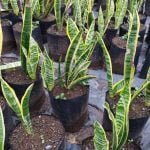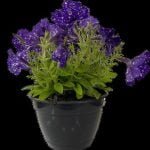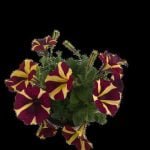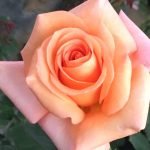Showing 1489–1500 of 2125 resultsSorted by popularity
-

Ekebergia Capensis 10lt
R240.00Add to cartEkebergia Capensis 10lt
Common Names: Cape Ash, Dogplum, EssenhoutFull Sun
Low Watering
Indigenous
Evergreen
Drought Tolerant When EstablishedEkebergia capensis, commonly known as the Cape ash or African ash, is a tree species native to South Africa.
Habitat: Ekebergia capensis is found in various parts of South Africa, including the Cape Peninsula, Eastern Cape, KwaZulu-Natal, Mpumalanga, and Limpopo. It typically grows in woodland and forest habitats, often near rivers or in moist areas.
Description: It is a medium-sized to large deciduous tree that can reach heights of up to 20 meters. The tree has a dense, rounded crown and a straight trunk. The bark is greyish-brown and becomes rough and fissured as the tree matures. The leaves are compound, with leaflets arranged in pairs, and they are shiny dark green in colour.
Flowers and Fruits: Ekebergia capensis produces small, creamy-white flowers in dense clusters. The flowers are fragrant and attract bees and other insects for pollination. After pollination, the tree develops small, round fruits that turn purple when ripe. The fruit contains a single seed and is edible, but not commonly consumed by humans.
Uses: Ekebergia capensis has several uses in traditional medicine and cultural practices. Various parts of the tree, such as the bark, leaves, and roots, are used for their medicinal properties. The wood is durable and used in construction, furniture making, and for fuel. The tree also has some cultural significance and is often planted as an ornamental tree in gardens and public spaces.
Conservation status: Ekebergia capensis is not currently listed as a threatened species. However, like many tree species, it can face threats from habitat loss, deforestation, and invasive species. Conservation efforts are important to preserve the natural habitats where this tree species occurs.
-

Cape Ash Tree 250lt
R7,950.00Add to cartEkebergia Capensis Tree 70lt
Common Name: Cape Ash TreeFull Sun
Low Watering
Indigenous
Evergreen
Drought Tolerant When EstablishedEkebergia capensis, commonly known as the Cape ash or African ash, is a tree species native to South Africa.
Habitat: Ekebergia capensis is found in various parts of South Africa, including the Cape Peninsula, Eastern Cape, KwaZulu-Natal, Mpumalanga, and Limpopo. It typically grows in woodland and forest habitats, often near rivers or in moist areas.
Description: It is a medium-sized to large deciduous tree that can reach heights of up to 20 meters. The tree has a dense, rounded crown and a straight trunk. The bark is greyish-brown and becomes rough and fissured as the tree matures. The leaves are compound, with leaflets arranged in pairs, and they are shiny dark green in colour.
Flowers and Fruits: Ekebergia capensis produces small, creamy-white flowers in dense clusters. The flowers are fragrant and attract bees and other insects for pollination. After pollination, the tree develops small, round fruits that turn purple when ripe. The fruit contains a single seed and is edible, but not commonly consumed by humans.
Uses: Ekebergia capensis has several uses in traditional medicine and cultural practices. Various parts of the tree, such as the bark, leaves, and roots, are used for their medicinal properties. The wood is durable and used in construction, furniture making, and for fuel. The tree also has some cultural significance and is often planted as an ornamental tree in gardens and public spaces.
Conservation status: Ekebergia capensis is not currently listed as a threatened species. However, like many tree species, it can face threats from habitat loss, deforestation, and invasive species. Conservation efforts are important to preserve the natural habitats where this tree species occurs.
-
Sale!

Syzygium Paniculatum 10lt (Eugenia)
Original price was: R350.00.R200.00Current price is: R200.00.Add to cartSyzygium Paniculatum 10lt
Common Name: Eugenia Tree. Australian Brush-cherryFull Sun
Afternoon Sun
Moderate Watering
Evergreen
Fast Growing
Drought ResistantSyzygium paniculatum, commonly known as the Brush Cherry, Magenta Lilly Pilly, or Australian Cherry, is an evergreen tree or shrub native to Australia. It belongs to the Myrtaceae family and is well-regarded for its attractive foliage, colourful berries, and suitability for hedging and landscaping purposes.
Appearance: Syzygium paniculatum can grow as either a small to medium-sized tree or a dense shrub. It typically reaches heights of 3 to 15m with a spread of about 2 to 5m. The tree has an upright, compact growth habit, and its dense foliage provides good privacy and screening when used as a hedge.
Leaves: The leaves of Syzygium paniculatum are glossy, dark green, and usually have an elliptical or lanceolate shape. They are arranged opposite each other on the branches.
Flowers: The tree produces small, fluffy, cream-colored flowers that are often grouped in panicles or terminal clusters. These blooms are not particularly showy but attract pollinators like bees and butterflies.
Berries: One of the attractive features of Syzygium paniculatum is its colourful berries. After flowering, it bears small, round fruit that changes colour as it ripens. The berries start green and turn shades of pink, magenta, or deep red, depending on the variety.
Growth Requirements: The Brush Cherry thrives in full sun to partial shade and prefers well-draining soil. It is relatively hardy and adaptable, making it suitable for a wide range of climates, including coastal regions. It can tolerate light frost but may require protection in colder climates.
Uses: Syzygium paniculatum is a versatile plant often used in landscaping for hedges, screens, and privacy barriers. Its dense growth and attractive foliage make it an excellent choice for shaping and maintaining formal hedges. Additionally, the colourful berries add ornamental value to the landscape.
Pruning: Regular pruning is beneficial to maintain a neat and compact shape for hedges or to encourage bushier growth. The plant can be trimmed to the desired height and shape.
-
Sale!

Sansevieria Trifasciata ‘Laurentii’ 10lt
Original price was: R325.00.R210.00Current price is: R210.00.Add to cartSansevieria Trifasciata ‘Laurentii’ 10lt
Common Name: Snake Plant, Mother In Laws TongueFull Sun
Semi Shade
Low Watering
Evergreenansevieria trifasciata ‘Laurentii’ is a popular cultivar of the Sansevieria trifasciata species, commonly known as Snake Plant or Mother-in-Law’s Tongue. The ‘Laurentii’ variety is characterized by its tall, upright leaves with bold yellow margins that contrast with the dark green center.
The Snake Plant is a hardy and low-maintenance plant that is widely appreciated for its air-purifying qualities and ability to tolerate a wide range of growing conditions. It is native to West Africa but has become a popular houseplant worldwide.
The ‘Laurentii’ cultivar, with its distinctive yellow-edged leaves, adds a touch of elegance and visual interest to any indoor space. The leaves grow in an erect manner, reaching heights of up to several feet, and have a sword-like shape. The variegation of yellow and green creates a striking and eye-catching display.
As a low-maintenance plant, the Snake Plant is known for its resilience and ability to tolerate neglect. It thrives in various lighting conditions, from bright indirect light to low light, making it suitable for different areas of the home or office. However, it tends to grow more vigorously and maintain its variegation better in brighter light.
In terms of watering, Snake Plants are drought-tolerant and prefer to dry out between waterings. It’s important to avoid overwatering, as they are prone to root rot in overly wet soil. It is generally better to underwater than to overwater these plants. Allow the top inch or so of the soil to dry out before watering again.
Snake Plants are typically potted in well-draining soil to prevent waterlogging. Repotting is usually done when the plant has outgrown its current container or to refresh the soil every few years.
In addition to its attractive appearance, the Snake Plant is known for its air-purifying abilities. It efficiently removes toxins such as formaldehyde, benzene, and xylene from the air, making it a great choice for improving indoor air quality.
Overall, the Sansevieria trifasciata ‘Laurentii’ is a stunning cultivar of the Snake Plant that adds a touch of sophistication to any indoor setting. Its yellow-edged leaves, combined with its easy-care nature, make it a popular choice among plant enthusiasts and beginners alike.
-
Sale!

Apricot Babeco 10lt
Original price was: R400.00.R249.99Current price is: R249.99.Add to cartApricot Babeco 10lt
Full Sun
Medium Watering
Deciduous Tree -
Sale!

Petunia Perennial Assorted 21cm H/B
Original price was: R195.00.R149.99Current price is: R149.99.Add to cartPetunia Perennial Assorted 21cm Hanging Basket
Petunias are commonly grown as annuals, but there are also perennial varieties available. While the majority of petunias are annuals, meaning they complete their life cycle in one growing season, perennial petunias can come back year after year with proper care. However, it’s important to note that perennial petunias are not as common or widely available as the annual varieties.
Perennial petunias belong to the species Petunia axillaris and Petunia integrifolia. They are often referred to as “wild petunias” or “perennial petunias.” Here are some key characteristics of perennial petunias:
Growth habit: Perennial petunias tend to have a more compact and upright growth habit compared to the trailing or spreading habit of many annual petunias. They form mounds of foliage and produce an abundance of flowers.
Flowers: The flowers of perennial petunias are typically smaller than those of their annual counterparts. They come in various colours, including shades of pink, purple, and white. The flowers have a trumpet-like shape similar to the annual petunias.
Perennial nature: Perennial petunias are capable of returning year after year in suitable growing conditions. They can be treated as herbaceous perennials, dying back to the ground in winter and regrowing from the roots in spring.
Care and maintenance: Perennial petunias require similar care to other garden perennials. They prefer well-draining soil and full sun to partial shade. Regular watering and mulching can help maintain moisture levels in the soil. Deadheading spent flowers can encourage continuous blooming. In colder regions, providing winter protection such as mulching or covering the plants can increase their chances of survival.
Propagation: Perennial petunias can be propagated through division or by taking stem cuttings. Division involves separating the plant into smaller sections and replanting them, while stem cuttings involve rooting a stem segment in a suitable growing medium.
It’s worth mentioning that many gardeners prefer to grow annual petunias due to their larger flower size, more extensive colour range, and abundant blooming throughout the growing season.
-
Sale!

Petunia Perennial Assorted 14cm Pot
Original price was: R110.00.R89.99Current price is: R89.99.Add to cartPetunia Perennial Assorted 14cm Pot
Petunias are commonly grown as annuals, but there are also perennial varieties available. While the majority of petunias are annuals, meaning they complete their life cycle in one growing season, perennial petunias can come back year after year with proper care. However, it’s important to note that perennial petunias are not as common or widely available as the annual varieties.
Perennial petunias belong to the species Petunia axillaris and Petunia integrifolia. They are often referred to as “wild petunias” or “perennial petunias.” Here are some key characteristics of perennial petunias:
Growth habit: Perennial petunias tend to have a more compact and upright growth habit compared to the trailing or spreading habit of many annual petunias. They form mounds of foliage and produce an abundance of flowers.
Flowers: The flowers of perennial petunias are typically smaller than those of their annual counterparts. They come in various colours, including shades of pink, purple, and white. The flowers have a trumpet-like shape similar to the annual petunias.
Perennial nature: Perennial petunias are capable of returning year after year in suitable growing conditions. They can be treated as herbaceous perennials, dying back to the ground in winter and regrowing from the roots in spring.
Care and maintenance: Perennial petunias require similar care to other garden perennials. They prefer well-draining soil and full sun to partial shade. Regular watering and mulching can help maintain moisture levels in the soil. Deadheading spent flowers can encourage continuous blooming. In colder regions, providing winter protection such as mulching or covering the plants can increase their chances of survival.
Propagation: Perennial petunias can be propagated through division or by taking stem cuttings. Division involves separating the plant into smaller sections and replanting them, while stem cuttings involve rooting a stem segment in a suitable growing medium.
It’s worth mentioning that many gardeners prefer to grow annual petunias due to their larger flower size, more extensive colour range, and abundant blooming throughout the growing season.
-

Argyranthemum Assorted 14cm Pot
R110.00Add to cartArgyranthemum Assorted 14cm Pot
Argyranthemum, commonly known as Marguerite daisies or dill daisies, is a genus of flowering plants in the family Asteraceae. These plants are native to the Canary Islands and Madeira but are widely cultivated and appreciated for their colourful and daisy-like flowers in various parts of the world, including South Africa.
Flowers: Argyranthemum plants produce beautiful and daisy-like flowers with petals that can come in a variety of colours, including shades of white, yellow, pink, and lavender. The flowers typically have a prominent central disk surrounded by ray-like petals. They bloom abundantly and can add a cheerful touch to gardens and landscapes.
Growth habit: Argyranthemum plants generally have a compact and bushy growth habit. They form dense mounds of foliage and flowers, making them suitable for borders, containers, and mixed flower beds.
Foliage: The leaves of Argyranthemum plants are typically green, lobed, and slightly hairy. The foliage provides an attractive backdrop to the vibrant flowers and remains visually appealing even when the plant is not in bloom.
Sun and temperature requirements: Argyranthemum plants thrive in full sun to partial shade. They prefer moderate temperatures and can withstand heat and dry conditions, making them suitable for South African climates. However, they may benefit from some shade during the hottest parts of the day in very hot regions.
Care and maintenance: Argyranthemum plants require regular watering to keep the soil moist but not waterlogged. They appreciate well-draining soil and benefit from occasional fertilisation to promote healthy growth and continuous blooming. Deadheading spent flowers can encourage more blooms and maintain a tidy appearance. Pruning back the plants after flowering can help promote bushiness and extend their lifespan.
Propagation: Argyranthemum plants can be propagated through seeds or vegetative methods such as stem cuttings. Seeds can be sown in spring, while stem cuttings can be taken from actively growing shoots and rooted in a suitable medium.
Argyranthemum is a popular choice for gardeners in South Africa due to its vibrant flowers, easy care requirements, and ability to tolerate various growing conditions. Whether planted in gardens, containers, or as part of mixed flower displays, Argyranthemum can add a cheerful and colourful presence to outdoor spaces.
-

Cliffortia Sandy Bay 17cm Pot
R85.00Add to cartCliffortia Sandy Bay 17cm Pot
Full Sun
Low Watering
Evergreen
Wind Tolerant
Feed Every Second MonthA hardy and attractive ground cover plant with glossy green leaves.
White to pinky coloured flowers from summer to winter. They are fast spreading so your garden will be neatly covered in no time. -

Syzygium Guineense 125lt Large
R3,950.00Add to cartSyzygium Guineense 125lt Large
Common Name: WaterpearApprox 3.5-4m
Full Sun
Indigenous
Medium Watering
Wind TolerantSyzygium guineense, commonly known as Waterberry, Water Pear, or African Waterpear, is a species of tree belonging to the Myrtaceae family. It is native to various regions in Africa, including parts of West Africa, East Africa, and southern Africa. The Waterberry tree is valued for its edible fruits and is often found growing near water sources, such as rivers and lakes.
Appearance: Syzygium guineense is a medium-sized to large tree that can reach heights of 10 to 30m. It has a rounded crown with dense foliage.
Leaves: The leaves of the Waterberry tree are simple, opposite, and elliptical in shape. They are dark green and have a glossy appearance.
Flowers: The tree produces small, cream-colored or white flowers that are arranged in panicles or clusters. The flowers are usually not showy but are an important source of nectar for pollinators.
Fruits: The most significant feature of Syzygium guineense is its edible fruit, which is known as Waterberry or Water Pear. The fruits are small, round, and turn from green to purple-black when ripe. They have a sweet and slightly tart flavour and are enjoyed fresh or used to make jams, jellies, and beverages.
Growth Requirements: Waterberry trees prefer well-draining soil and are commonly found growing in areas with access to water, such as riverbanks and wetlands. They can tolerate both full sun and partial shade.
Uses: The fruits of Syzygium guineense are an important food source for both humans and wildlife, including birds and various mammal species. In some regions, the bark and leaves of the tree have also been used for medicinal purposes.
Wildlife Attraction: The Waterberry tree is attractive to birds and other wildlife, which feed on its fruits and disperse its seeds, contributing to its ecological significance.
-

Summer Lady Hybrid Tea Rose 5lt
R190.00Add to cartSummer Lady Hybrid Tea Rose 5lt
Full Sun
Afternoon Sun
Moderate Watering
Monthly Feeding
Prune Every WinterHybrid tea roses are a popular class of roses known for their large, high-centered flowers and long stems. They are a cross between hybrid perpetual roses and tea roses, hence the name “hybrid tea.”
These roses are widely cultivated and admired for their beauty, fragrance, and versatility in various gardening and floral arrangements.Here are some key points about hybrid tea roses:
Appearance
Hybrid tea roses typically have a single flower per stem, with large blooms that often have a distinct spiral shape. The flowers usually have many petals, ranging in color from pure white to shades of pink, red, yellow, and even lavender. They can be single or double-flowered, and their form can vary from classic, high-centered to more open and relaxed.Growth habit
Hybrid tea roses are deciduous shrubs that can grow from 1 to 2m in height, depending on the variety.
They have an upright growth habit with straight stems that make them ideal for cutting and using in floral arrangements.
The leaves are generally dark green and glossy.Fragrance
While hybrid tea roses are prized for their beauty, not all varieties are strongly scented.
Breeders have focused on enhancing the visual characteristics of the flowers, sometimes at the expense of fragrance. However, many hybrid tea roses still retain a delightful fragrance, ranging from mild to intense.Blooming season
Hybrid tea roses bloom throughout the growing season, producing an abundance of flowers. Their peak blooming period varies depending on the climate and specific variety, but it generally occurs during the spring and continues through the summer and autumn months.Care and maintenance
They require regular care to thrive.
They prefer well-drained soil enriched with organic matter and should be planted in a sunny location that receives at least six hours of direct sunlight per day.
Adequate watering, pruning, and fertilizing are essential for their healthy growth.
Pruning in late winter is particularly important to encourage strong stems and shape the plant.Uses
Hybrid tea roses are versatile and can be used in various ways.
They are popular choices for cut flowers, as their long stems and large blooms make them perfect for floral arrangements.
They are also commonly used in formal garden beds, borders, and as accent plants in landscapes.Varieties
There are countless hybrid tea rose varieties available, each with its unique characteristics in terms of color, form, fragrance, and disease resistance.Hybrid tea roses continue to be popular among gardeners, florists, and rose enthusiasts due to their exquisite beauty and versatility. Whether in a vase or in the garden, their elegant blooms bring beauty and fragrance to any setting.
-

Warm Wishes Hybrid Tea Rose 5lt
R190.00Add to cartWarm Wishes Hybrid Tea Rose 5lt
Full Sun
Afternoon Sun
Moderate Watering
Monthly Feeding
Prune Every WinterHybrid tea roses are a popular class of roses known for their large, high-centered flowers and long stems. They are a cross between hybrid perpetual roses and tea roses, hence the name “hybrid tea.”
These roses are widely cultivated and admired for their beauty, fragrance, and versatility in various gardening and floral arrangements.Here are some key points about hybrid tea roses:
Appearance
Hybrid tea roses typically have a single flower per stem, with large blooms that often have a distinct spiral shape. The flowers usually have many petals, ranging in color from pure white to shades of pink, red, yellow, and even lavender. They can be single or double-flowered, and their form can vary from classic, high-centered to more open and relaxed.Growth habit
Hybrid tea roses are deciduous shrubs that can grow from 1 to 2m in height, depending on the variety.
They have an upright growth habit with straight stems that make them ideal for cutting and using in floral arrangements.
The leaves are generally dark green and glossy.Fragrance
While hybrid tea roses are prized for their beauty, not all varieties are strongly scented.
Breeders have focused on enhancing the visual characteristics of the flowers, sometimes at the expense of fragrance. However, many hybrid tea roses still retain a delightful fragrance, ranging from mild to intense.Blooming season
Hybrid tea roses bloom throughout the growing season, producing an abundance of flowers. Their peak blooming period varies depending on the climate and specific variety, but it generally occurs during the spring and continues through the summer and autumn months.Care and maintenance
They require regular care to thrive.
They prefer well-drained soil enriched with organic matter and should be planted in a sunny location that receives at least six hours of direct sunlight per day.
Adequate watering, pruning, and fertilizing are essential for their healthy growth.
Pruning in late winter is particularly important to encourage strong stems and shape the plant.Uses
Hybrid tea roses are versatile and can be used in various ways.
They are popular choices for cut flowers, as their long stems and large blooms make them perfect for floral arrangements.
They are also commonly used in formal garden beds, borders, and as accent plants in landscapes.Varieties
There are countless hybrid tea rose varieties available, each with its unique characteristics in terms of color, form, fragrance, and disease resistance.Hybrid tea roses continue to be popular among gardeners, florists, and rose enthusiasts due to their exquisite beauty and versatility. Whether in a vase or in the garden, their elegant blooms bring beauty and fragrance to any setting.
